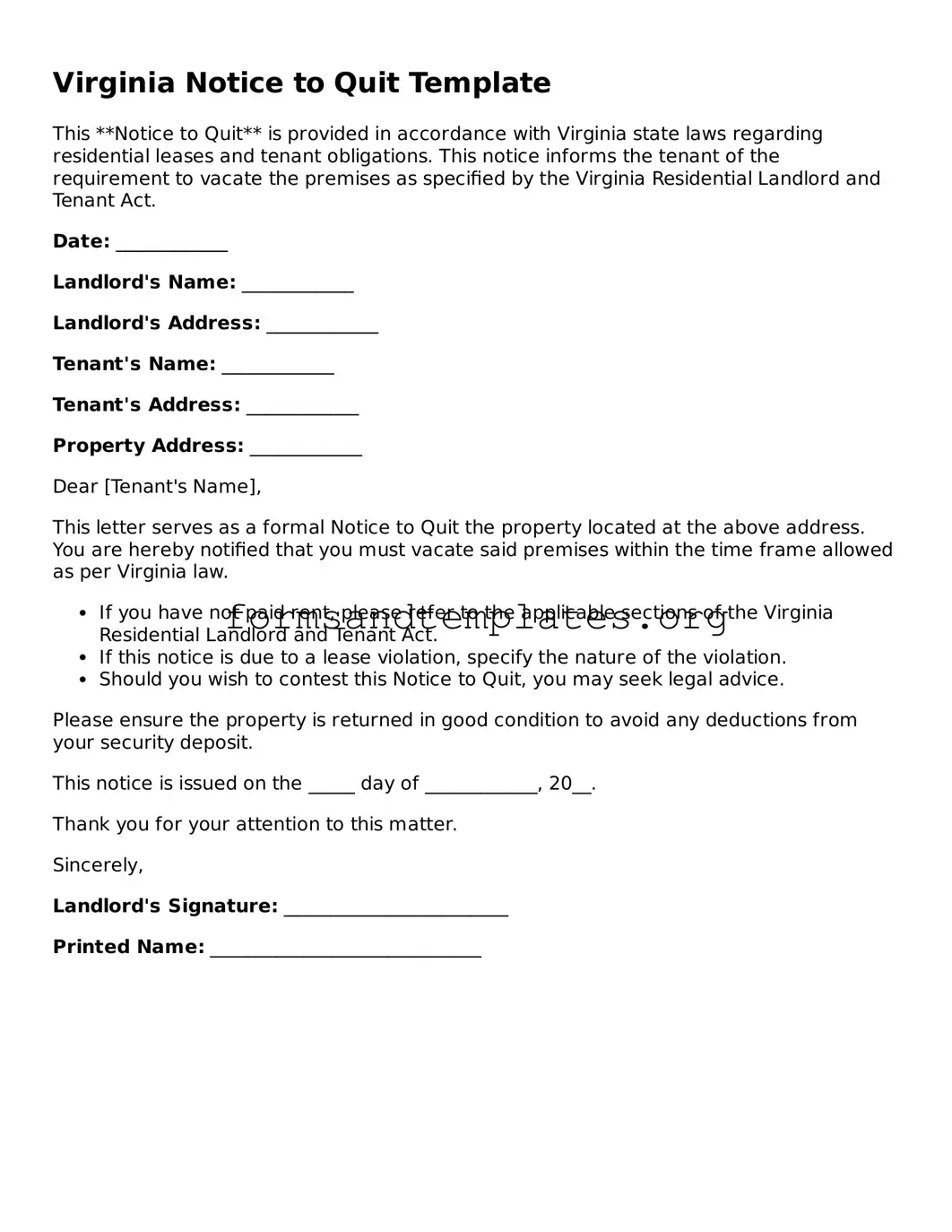Virginia Notice to Quit Template
This **Notice to Quit** is provided in accordance with Virginia state laws regarding residential leases and tenant obligations. This notice informs the tenant of the requirement to vacate the premises as specified by the Virginia Residential Landlord and Tenant Act.
Date: ____________
Landlord's Name: ____________
Landlord's Address: ____________
Tenant's Name: ____________
Tenant's Address: ____________
Property Address: ____________
Dear [Tenant's Name],
This letter serves as a formal Notice to Quit the property located at the above address. You are hereby notified that you must vacate said premises within the time frame allowed as per Virginia law.
- If you have not paid rent, please refer to the applicable sections of the Virginia Residential Landlord and Tenant Act.
- If this notice is due to a lease violation, specify the nature of the violation.
- Should you wish to contest this Notice to Quit, you may seek legal advice.
Please ensure the property is returned in good condition to avoid any deductions from your security deposit.
This notice is issued on the _____ day of ____________, 20__.
Thank you for your attention to this matter.
Sincerely,
Landlord's Signature: ________________________
Printed Name: _____________________________
